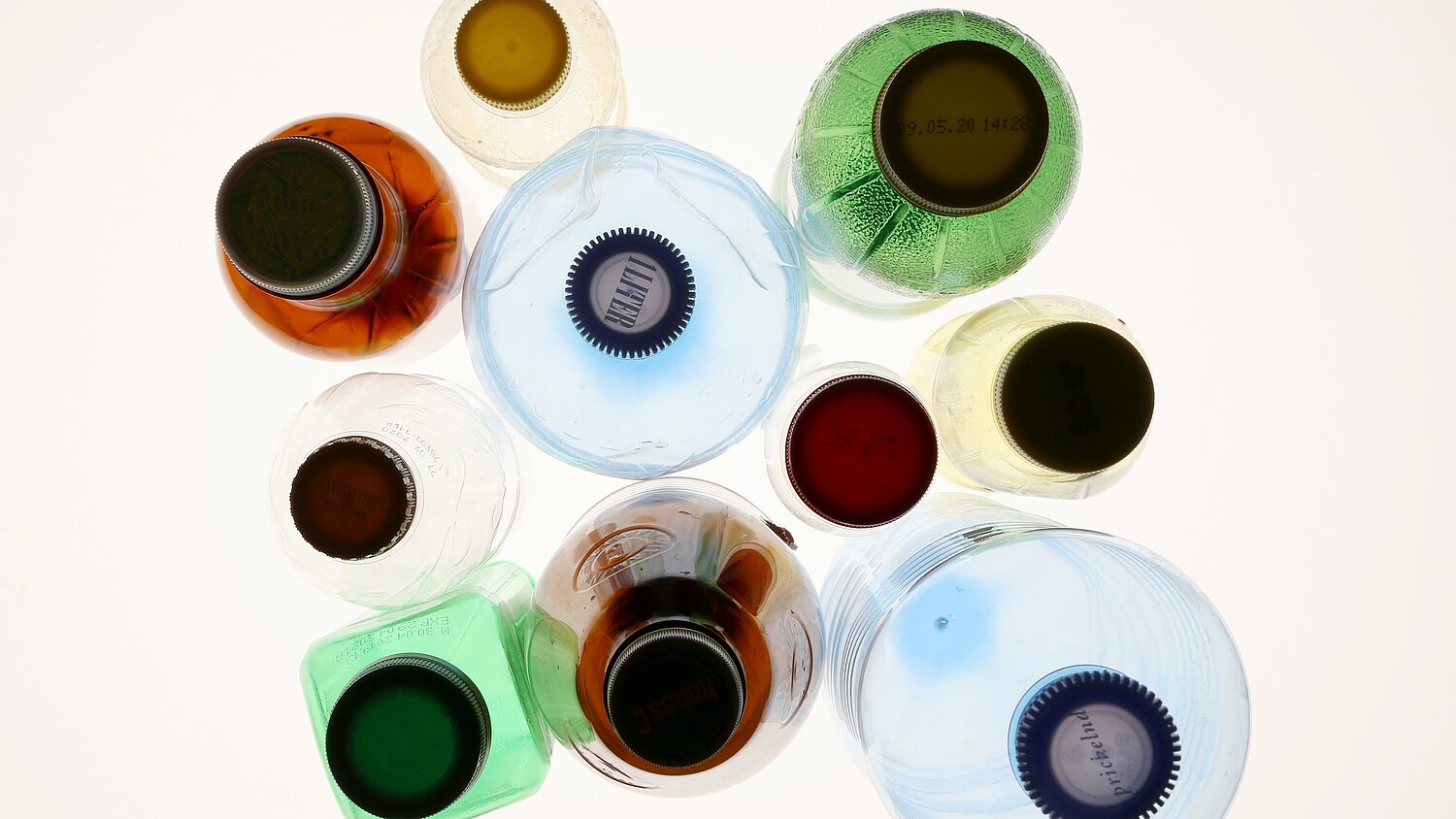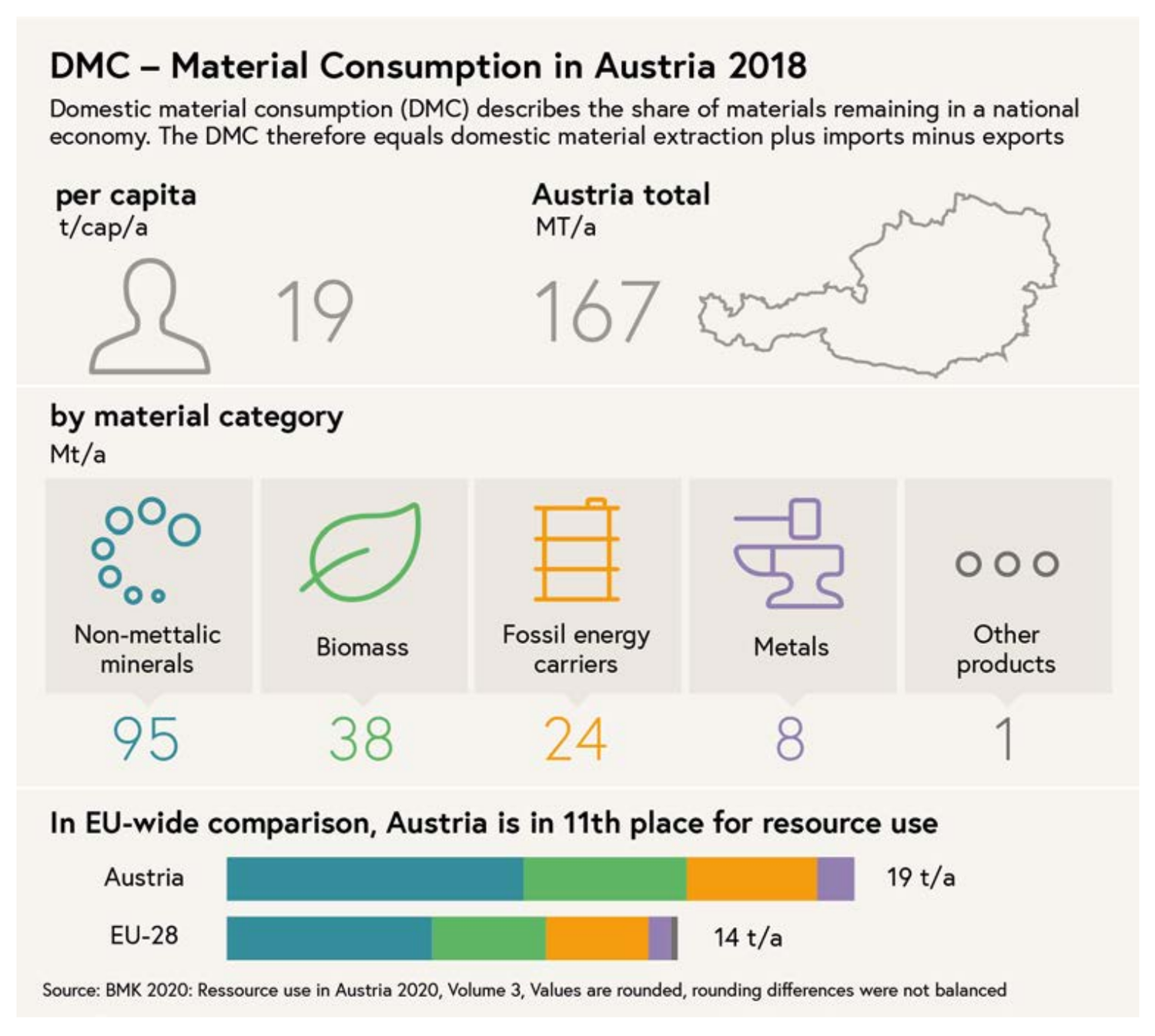Circular Economy
A rapidly growing world population, the increase in the level of material prosperity in emerging economies and our economic- and lifestyle are constantly increasing the pressure on our planet and threatening our ecological basis of life. The rapidly increasing consumption of natural resources and a linear economy are a key factor in this. In the context of sustainable development, reducing resource consumption as well as waste and emissions are therefore of central importance. This can be achieved through a fundamental transformation of the linear economy towards a circular economy. The EU's "New Circular Economy Action Plan" as a central component of the European Green Deal and the national Austrian Circular Economy Strategy support such a transformation. Data and information from the environmental accounts are used to monitor the implementation and progress of these programs.

Circular economy is the central approach to redesigning the current linear social and economic system. In a circular economy, raw materials are extracted in an environmentally friendly way, the goods produced from them are manufactured in a way that uses as few resources as possible and produces as little waste as possible, and their lifespan is extended. The value of products, materials and resources should be retained for as long as possible by returning them to the product cycle at the end of their use.
The overall ecological footprint is reduced by reducing resource consumption, avoiding pollutants and reducing waste and emissions. The circular economy therefore supports the overcoming of ecological challenges such as climate change or loss of biodiversity.
Circular Economy and the European Green Deal
The European Green Deal presented in 2019 also includes an ambitious roadmap to achieve a climate-neutral circular economy in order to decouple growth from resource use.
One of the main components of the European Green Deal is the Circular Economy Action Plan adopted by the European Commission in 2020. It contains a series of initiatives along the entire life cycle of products, covering topics such as product design, circular economy processes, sustainable consumption and waste prevention. The aim is to keep resources in the EU economy for as long as possible.
The Austrian Circular Economy Strategy
In order to implement the EU Action Plan for the Circular Economy, a national circular economy strategy was adopted by the Council of Ministers in Austria in December 2022. The vision of the strategy is to transform the Austrian economy and society into a climate-neutral, sustainable circular economy by 2050.
The central goals of the strategy are:
- Reduction of resource consumption
- Domestic material consumption (DMC): maximum 14 tons per capita/year (2030)
- Material footprint (MF): maximum 7 tons per capita/year (2050)
- Increase resource productivity by 50 percent (2030)
- Increase circularity rate to 18 percent (2030)
- Reduction of private household consumption by 10 percent (2030)
In June 2024, a first progress report was presented describing the implementation status of the projects mentioned in the circular economy strategy. For the monitoring of consumption-based material flows in Austria, Statistics Austria and Eurostat regularly collect data on indicators that are also used to manage the implementation of the circular economy strategy.
Environmental Accounting and Progress Monitoring of the Circular Economy
In order to monitor the implementation of the projects listed in the EU Action Plan for the Circular Economy and also in the Austrian Circular Economy Strategy and thus ensure their efficiency, a suitable monitoring system is required.
At EU level, there is the so-called Circular Economy Monitoring Framework, which enables the effectiveness of measures taken to be checked. In 2023, this framework, which was first adopted in 2018, was revised and supplemented with new indicators for material footprint and resource productivity as well as consumption footprint.
These indicators, whose data sources are the environmental accounts, can be found in the Austrian Circular Economy Strategy and thus also in the associated progress report.
The material footprint (MF) results from domestic material consumption (DMC) and raw material consumption (RMC). Material footprints are very relevant in the current policy context.
The rationale is that the EU has a bigger share of the world consumption/investment than of the world production, because much of the production of goods consumed in Europe is localised in Asia. Material footprints metrics give visibility to the EU responsibility for environmental pressures elsewhere as consequence of products exportet to the EU.
To determine resource productivity, economic output in euros, measured by gross domestic product (GDP), is divided by domestic material consumption. Improving resource productivity, i.e. the efficiency of material use, helps to reduce environmental pollution and environmental impacts.
At national and international level, the values from the material flow accounts of the environmental accounts are also used for further target monitoring of the circular economy strategy.

